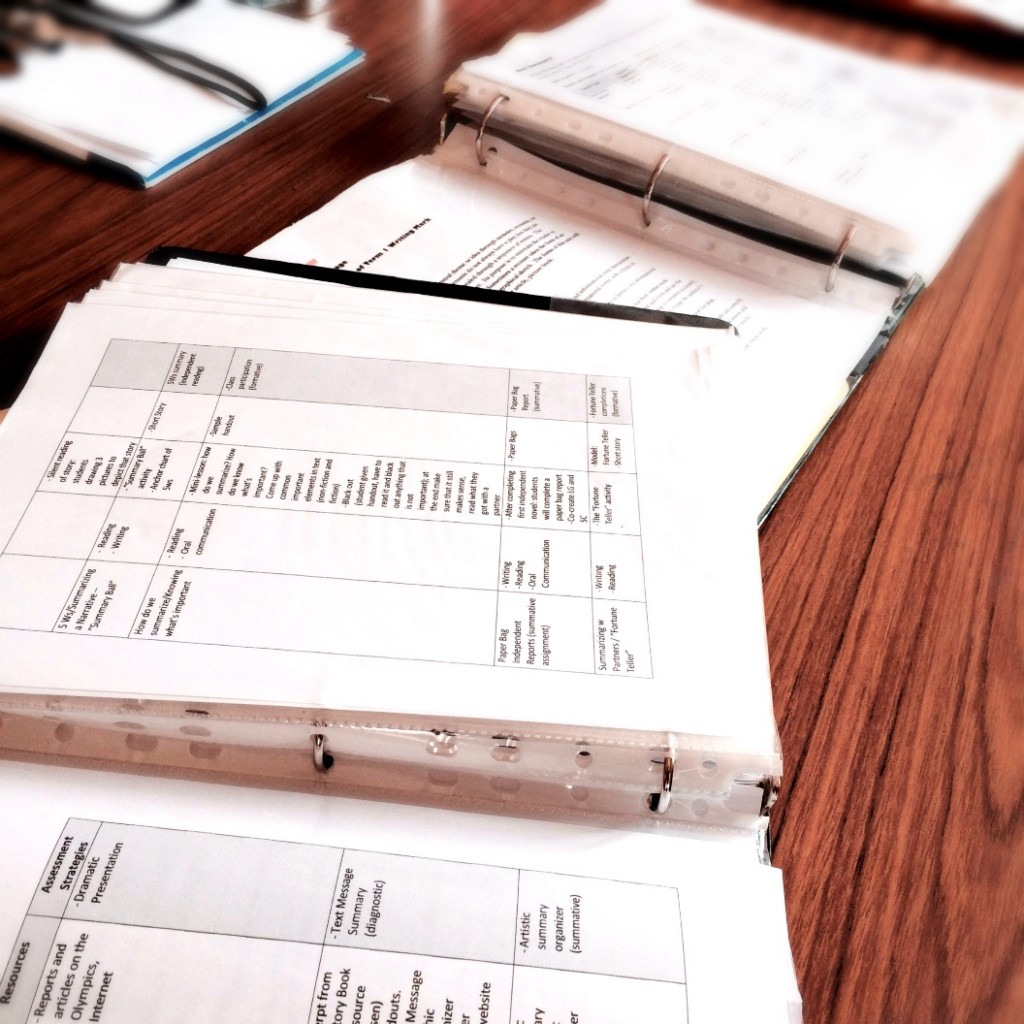Maintaining an Annual Plan
The quicker you realize that your long term plans depend more on the dynamic of your classroom makeup than anything else, the easier your “teacher life” will become. Honestly speaking, making a plan for the month, 6 weeks, or a term, is like picking the fastest lane when you’re driving during rush hour. You often make decisions to switch lanes based on what you see right in front of you but the ebb and flow of traffic can change every quarter mile. Making timelines and annual plans for curriculum delivery is a practice of optimism. You might plan to get a specific writing unit finished in 6-8 weeks but some years it may take 10 weeks, while in other years, it may take 12. With some classes, that same unit that took 8 weeks last year may only take 4 weeks this year. As a new teacher, you must keep in mind that mapping out units and long-range curriculum plans are simply that: plans. They are estimations, not some authoritative standard that you must live and die by.
You should refer to these plans from time to time to either speed up or take your time within a unit and to refresh your memory on where you want to be by a certain time in the year. But it is absolutely fine if you are not exactly “on track” with your annual plan (read “estimation”). And this is a good thing. Being responsive to your students’ needs means you are not a robot. Effective teachers are those who are receptive to the needs of their students and are sporadic from time to time. This is what gives meaning to school and life in general. I haven’t met one teacher who, by June, can say they have completed everything that they penned into their long-term annual plan back in August. There probably are teachers out there that can stand behind that but I hope that I am never one of them.
Your plans will indeed fluctuate from year to year, solely depending on the makeup of your student body. The abilities, desires, needs, and motivations of your students will determine the speed at which you cover curriculum and develop understanding of the children whom you teach. If you are feeling the stress of being behind where you ought to be in the curriculum, remember who set those mandates. It wasn’t a group of teachers who sat around and came up with appropriate expectations for a school year’s worth of learning. It was more likely a group of bodies far removed from the classroom who decided what should be taught in a course and how long it should take. That is a system set up for inconsistencies. Once you keep that in mind, you can rest a little easier.
“Sticking to the Script?”
At this time, I am about one month behind where I was last year. With the majority of the school year complete, I am two “textbook” chapters behind where I was with the 7th grade geography at this exact time last year. I have really done nothing different from this year to last. In fact, in terms of my teaching delivery, it has almost been a carbon copy. I’ve done almost everything the same: lessons, homework, assignments, tests, study guides, classes, and independent work time. But with a different group of students comes a different result. And as a teacher you should not be too overwhelmed by variance.
Educators must humbly embrace the fact that students will indelibly set the pace of the class’ growth, academically and otherwise. Because we are in the business of working with and educating humans (and not robots), the fabric of your classroom will change from year to year, month to month. For this geography class, I could catch up and be on pace with last year if I amped up the tempo a little bit. But there has to be a valid and authentic reason why this class is two chapters behind at this point in time. So speeding up to make sure that every single year you are at the same spot would do nothing except hurt the authentic learning environment that your students have established and are experiencing. It is important to think about and write your monthly, unit, and yearly plans down. But more importantly, you must trust your instincts on a daily basis. Things always look better on paper but teachers, students and classrooms don’t live on a page. So, learn to live with how things are going as far as pace in your class. Because like many other aspects of the growth of a new teacher, sometimes you just have to go with the flow.
[share title=”Share this Post” facebook=”true” twitter=”true” google_plus=”true”]

